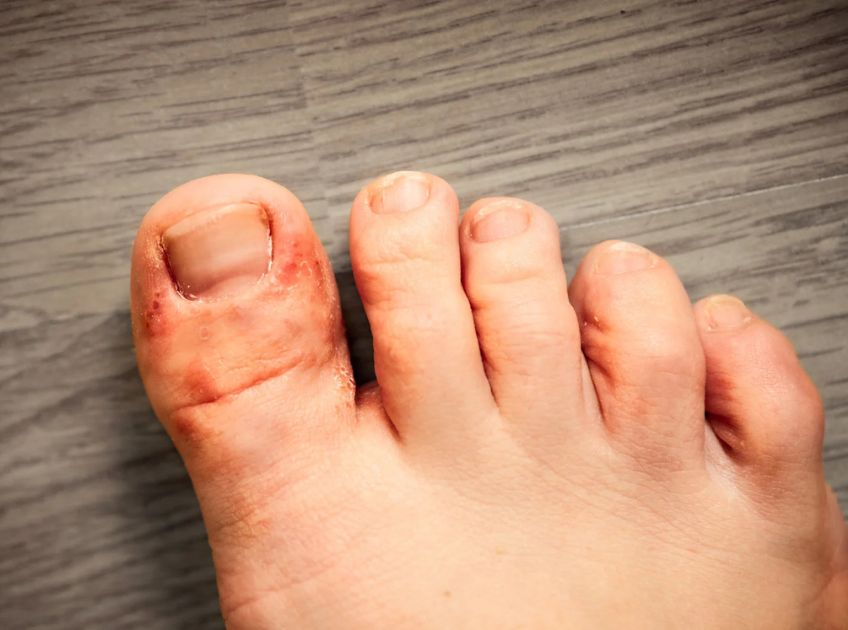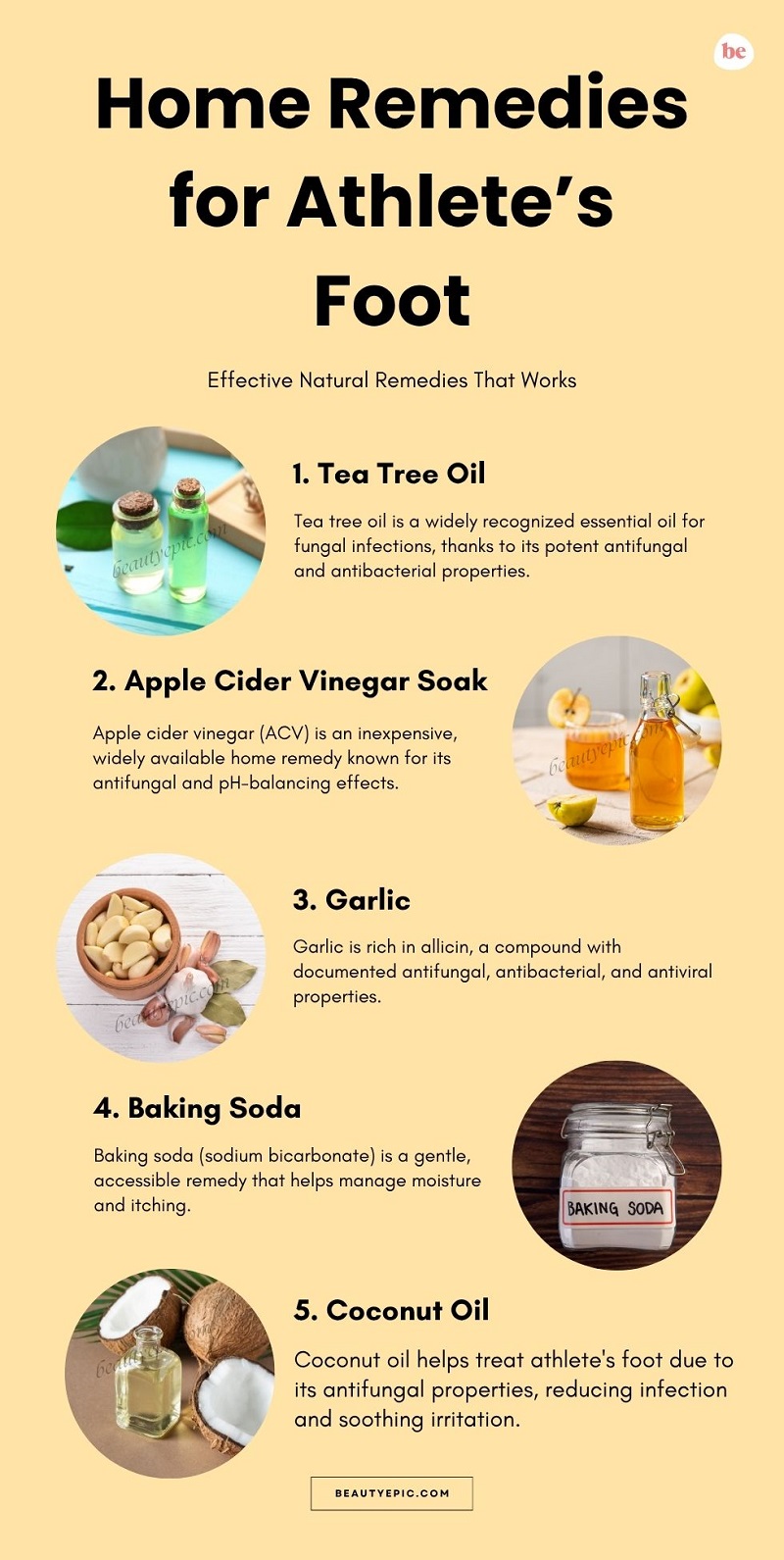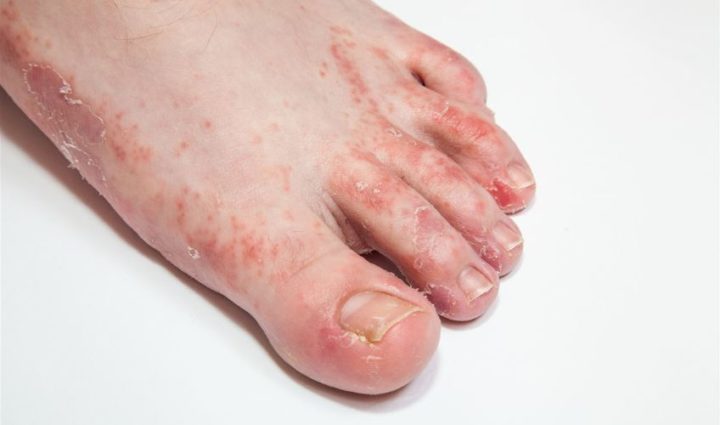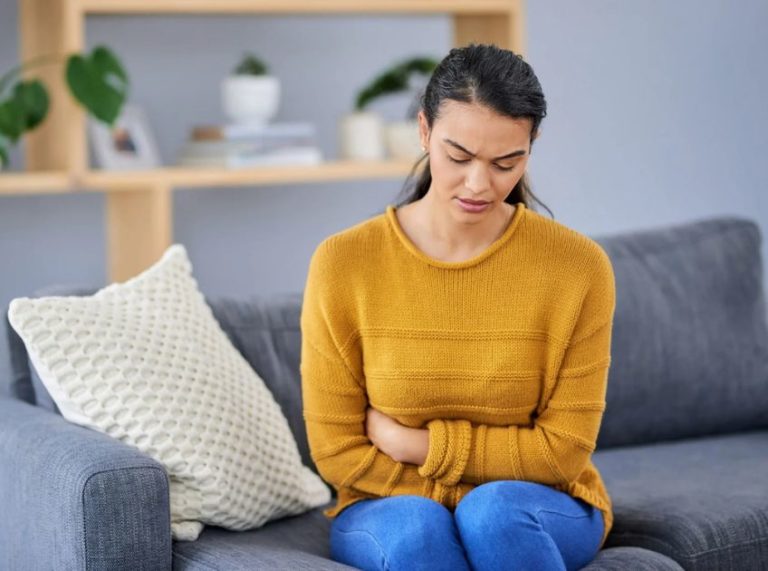
Important: This article is for informational purposes only. Please read our full disclaimer for more details.
Athlete’s foot, or tinea pedis, is a common fungal infection that affects the skin on the feet. It thrives in warm, moist environments like sweaty socks, shoes, and public locker rooms. Symptoms include itching, burning, redness, peeling skin, and sometimes a foul odor. While over-the-counter antifungal treatments are widely used, home remedies can complement care and provide relief naturally.
Fungal infections occur when dermatophytes, a type of fungus, multiply on the skin. Factors like damp footwear, excessive sweating, and poor hygiene increase the risk of infection. Understanding these causes is key to effective prevention and treatment.
5 Home Remedies That May Help Treat Athlete’s Foot
1. Tea Tree Oil – Nature’s Antifungal Solution
Tea tree oil is a widely recognized essential oil for fungal infections, thanks to its potent antifungal and antibacterial properties.
- How to Use
- Dilute 2–3 drops of tea tree oil in 1 teaspoon of a carrier oil, such as coconut, olive, or jojoba oil.
- Apply directly to affected areas twice daily, gently massaging to ensure absorption.
- For more persistent infections, add 5 drops to a basin of warm water and soak your feet for 15 minutes. Dry thoroughly afterward.
- Benefits
- Reduces itching, burning, and redness.
- Helps prevent secondary bacterial infections.
- It can support overall skin health by reducing inflammation.
- Precautions
- Always dilute tea tree oil to avoid irritation.
- Conduct a patch test on a small area of skin before full application.
- Scientific Insight
- A 2002 study published in the Australasian Journal of Dermatology found tea tree oil significantly improved symptoms in patients with athlete’s foot, confirming its antifungal and antimicrobial properties (1).
2. Apple Cider Vinegar Soak – Restore Skin Balance
Apple cider vinegar (ACV) is an inexpensive, widely available home remedy known for its antifungal and pH-balancing effects.
- How to Use
- Mix one part ACV with two parts warm water.
- Soak your feet for 10–15 minutes daily.
- Pat feet dry thoroughly afterward, especially between the toes, to prevent fungal growth.
- Benefits
- Its acidity may create an environment less favorable for fungal growth.
- It can help restore the skin’s natural pH balance and reduce odor.
- Soothes irritation and can help prevent cracking or peeling.
- Precautions
- Avoid soaking open wounds in vinegar, as it may sting.
- Dilute properly to prevent skin irritation.
- Scientific Insight
- Acetic acid, the main component of ACV, has demonstrated antifungal properties against dermatophytes in laboratory studies, supporting its role as a natural treatment (2).
3. Garlic – A Potent Antimicrobial Agent
Garlic is rich in allicin, a compound with documented antifungal, antibacterial, and antiviral properties.
- How to Use
- Crush 2–3 garlic cloves to create a paste.
- Mix with a small amount of olive oil to reduce irritation.
- Apply the mixture to affected areas for 10–15 minutes, then rinse thoroughly.
- Benefits: It may help kill the fungi responsible for athlete’s foot.
- Reduces inflammation and soothes itching.
- Supports overall skin health with antioxidant effects.
- Precautions
- Garlic can cause burning or irritation, especially on sensitive skin.
- Limit application to short periods and rinse off afterward.
- Scientific Insight
- Studies have demonstrated garlic’s effectiveness against dermatophyte fungi, validating its traditional use for skin infections (3).
4. Baking Soda – Drying and Soothing Remedy
Baking soda (sodium bicarbonate) is a gentle, accessible remedy that helps manage moisture and itching.
- How to Use
- Make a paste by mixing baking soda with water.
- Apply to affected areas for 10 minutes and rinse thoroughly.
- Alternatively, sprinkle baking soda in shoes or socks to absorb moisture and reduce fungal growth.
- Benefits
- Helps dry out the skin and reduce itching.
- Creates a slightly alkaline environment that can inhibit fungal growth.
- It can be used preventively inside shoes to maintain dryness.
- Precautions
- Avoid prolonged use on broken skin, as it may cause dryness or irritation.
- Use as part of a broader foot care routine rather than a standalone treatment.
- Scientific Insight
- Sodium bicarbonate has mild antifungal properties, making it a supportive measure for fungal skin infections (4).
5. Coconut Oil – Moisturizing Antifungal Aid
Coconut oil contains lauric acid and other fatty acids with antifungal and antibacterial properties, making it effective for both treating infection and supporting skin recovery.
- How to Use
- Apply a thin layer of virgin coconut oil to the affected area 2–3 times daily.
- Gently massage until absorbed.
- It can be combined with a few drops of tea tree oil for enhanced antifungal effects.
- Benefits
- Inhibits fungal growth while keeping skin hydrated.
- Soothes irritation and prevents cracking, especially between toes.
- Supports overall skin barrier repair and resilience.
- Precautions
- Minimal side effects for most people, but monitor for allergic reactions.
- Use consistently for best results.
- Scientific Insight
- Research confirms that coconut oil has antifungal activity against dermatophytes and supports skin healing, making it an effective adjunctive treatment for athlete’s foot (5).
When to See a Doctor
While home remedies can help mild cases, persistent or severe infections require medical attention. Consult a doctor if:
- The infection spreads or worsens despite home care
- Pain, swelling, or pus develops
- You have diabetes, weakened immunity, or circulation problems
Early intervention can prevent complications and ensure effective treatment.
Understanding the Causes of Athlete’s Foot
Athlete’s foot is primarily caused by dermatophyte fungi, which thrive in warm, damp conditions. Contributing factors include:
- Wearing tight or non-breathable footwear
- Sweaty feet that remain damp for long periods
- Walking barefoot in public areas like gyms or pools
- Sharing socks, shoes, or towels with an infected person
By identifying and addressing these factors, you can reduce the risk of infection and recurrence.
Preventing Athlete’s Foot: Practical Tips
- Keep feet clean and dry, especially between toes
- Change socks daily and wear breathable shoes
- Avoid walking barefoot in public showers or locker rooms
- Disinfect shoes and practice good foot hygiene
- Use antifungal powders or sprays if prone to infections
Preventive care is often as important as treatment in managing athlete’s foot.
Frequently Asked Questions (FAQ’S)
1. Can home remedies fully cure athlete’s foot?
A. They can help mild cases and provide relief, but severe or persistent infections may require prescription antifungal treatments.
2. How long should I continue home treatments?
A. Daily application for 2–4 weeks is usually needed, even after symptoms improve, to prevent recurrence.
3. Are these remedies safe for everyone?
A. Most remedies are safe for healthy adults, but consult a doctor if you have diabetes, weak immunity, or sensitive skin. Always perform a patch test before using essential oils or acidic treatments.
Home remedies like tea tree oil, apple cider vinegar, garlic, baking soda, and coconut oil can offer natural relief for athlete’s foot. Combining these treatments with good hygiene, moisture control, and preventive measures can help manage symptoms and reduce the risk of recurrence. Persistent infections should be evaluated by a healthcare professional to ensure effective treatment and avoid complications.

















